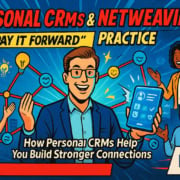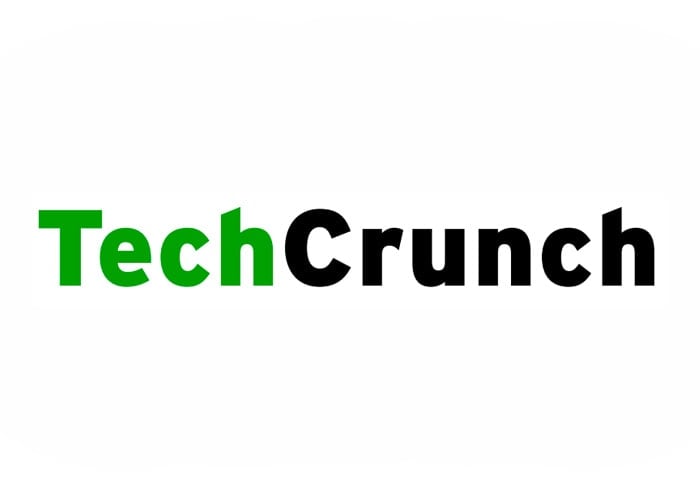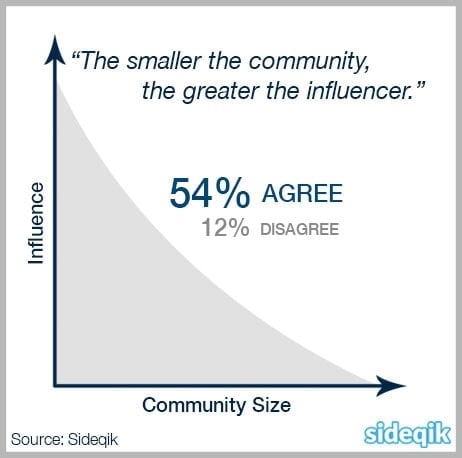Personal CRMs & Netweaving: Networking as a “Pay It Forward” Practice
Networking has a PR problem.
For many, the word conjures images of cocktail events with people shoving business cards in each other’s faces, or LinkedIn spam from strangers asking for favors.
No wonder a lot of folks feel networking is shallow or self-serving. Netweaving offers a refreshingly different approach – and a personal CRM can be an excellent tool to practice it.
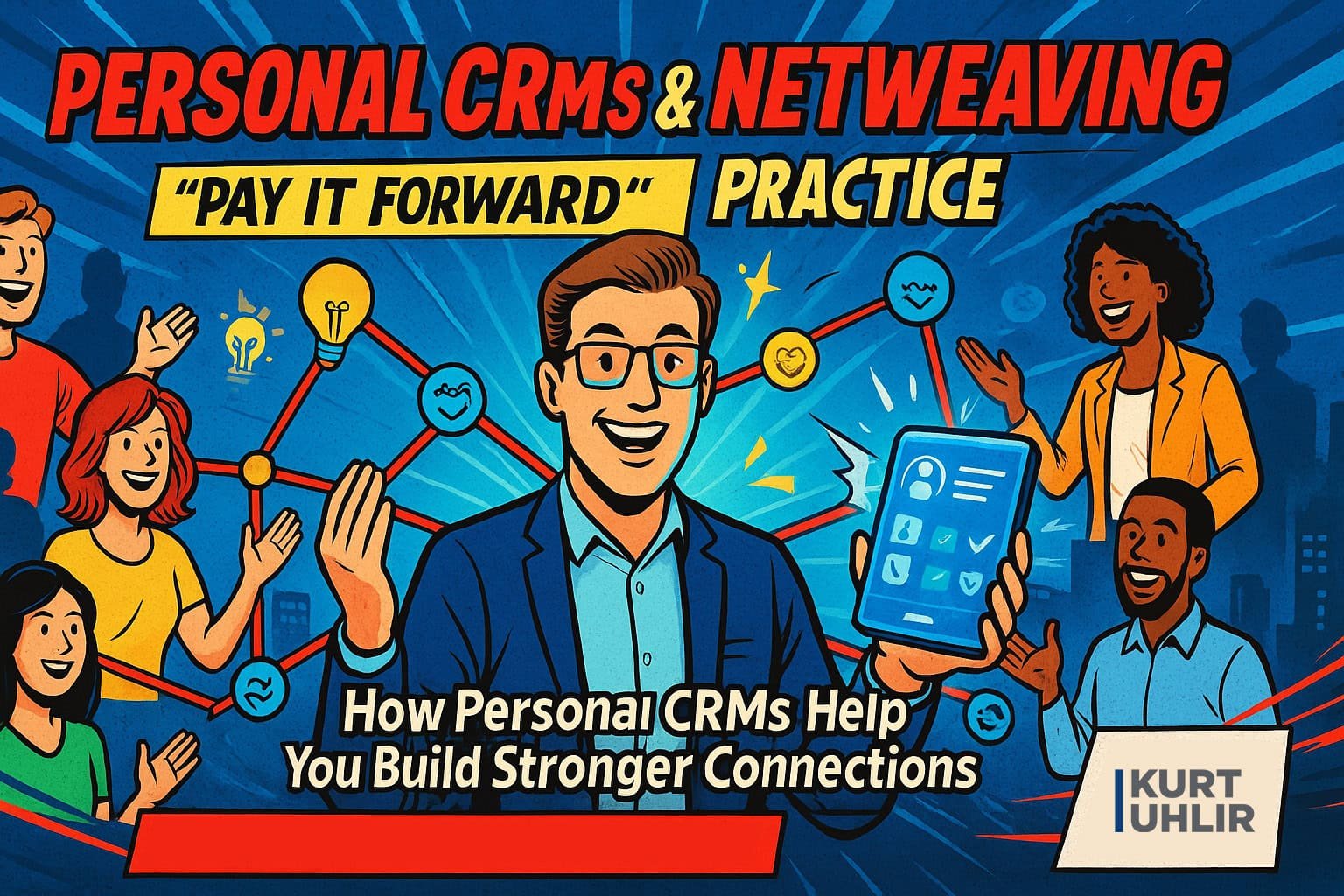
What is Netweaving?
In short, it’s the “give first” version of networking. The term was popularized by Bob Littell in his book The Heart and Art of NetWeaving as a “pay-it-forward form of networking” that flips the focus from “What can I get?” to “What can I give?”.
Instead of approaching connections with a transactional mindset, netweaving is about fostering genuine, long-term relationships built on generosity and trust.
It means connecting people to each other, sharing knowledge, and helping whenever you can – without immediately expecting something back. And, it is easier in my opinion – at least emotionally and mentally.
Netweaving still ultimately benefits you, but indirectly, through a ripple effect of goodwill. It aligns closely with principles of servant leadership and the idea that by helping others succeed, you build a network that, in time, will support you back .
How does a personal CRM facilitate netweaving?
Think back to Jane’s case in the SaaS example I used in my guide to Personal CRMs. She used her CRM to note others’ needs and goals, not just her own agenda.
The CRM became a repository of opportunities to help: Person A is looking for a job, Person B needs a good designer, Person C loves getting book recommendations on leadership topics, and so on.
With this information at her fingertips, Jane could play matchmaker and supporter. This is netweaving in action – she’s essentially weaving a web among her contacts where she’s the connector at the center.
Here are a few practical tips to use your personal CRM in a netweaving-oriented way:
Record “Offers and Asks”
In your contact notes, it can be useful to jot two things for each person: what they offer (skills, expertise, resources they have) and what they might need or aspire to.
For example,
- Offers: experienced Web developer, well-connected in e-commerce industry;
- Asks: interested in speaking at conferences.
This way, when someone else needs a web developer or when you hear of a conference panel, you immediately think of this person.
Your CRM becomes a mini “talent and needs directory” that you can draw on to make helpful connections. (Some personal CRMs even let you search your notes, so you could later search “speaker” or “looking for job” and find who in your network fits that criteria.)
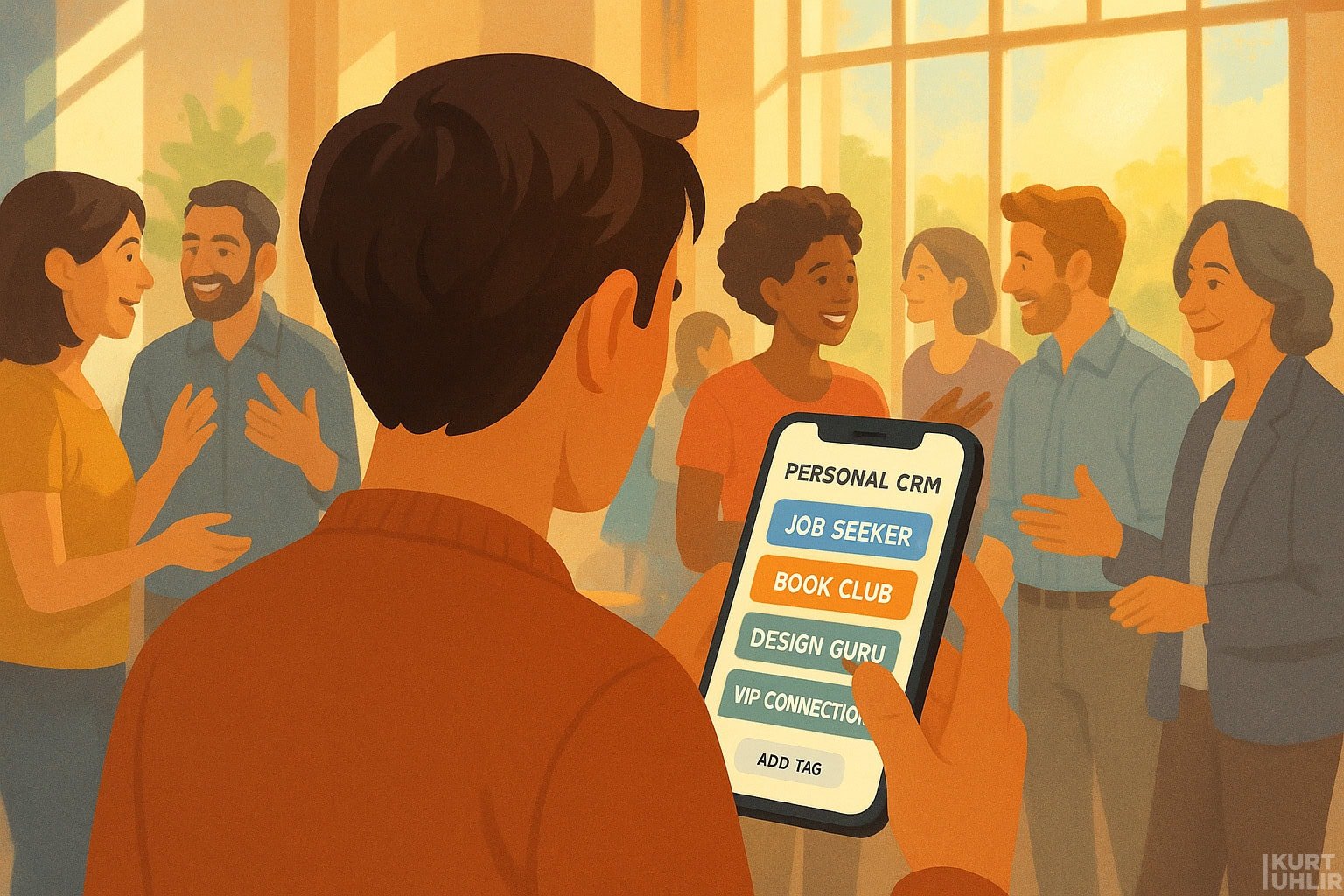
Use tags for generosity
Consider tagging contacts with things like “Looking for opportunities” or “🔍 Hiring” or “ Design Guru” – categories that represent needs or resources.
Then periodically browse those tags. Who could you introduce to whom? Whose problem could you solve by linking them up with someone else?
For instance, if you have a tag for “Job seeker” and another for “Hiring manager”, that’s a recipe for netweaving – scan through and see if any pairings jump out.
Even a personal CRM with modest tagging and search capabilities will let you cross-reference such tags.
Set “pay-it-forward” reminders
Not every reminder has to be about a direct catch-up.
You could set a reminder like, “Has it been 6 months since I’ve sent some helpful resource to X?” or “Check if Y achieved her goal of doing an Ironman triathlon – celebrate it.” These kinds of prompts nudge you to provide positive touches that are purely about them.
One of the beautiful things about netweaving is that it often re-energizes you about networking; it feels good and meaningful, not slimy. When you see someone light up because you remembered something important to them or helped them out, it’s deeply satisfying. That positive feedback loop makes you more likely to keep at it.
Keep track of personal details
This might seem small, but remembering personal tidbits (family, hobbies, life events) is part of generous relationship-building.
If someone mentions their kids or a passion project, note it. Next time you reach out, ask about that. E.g., “How’s your daughter liking her first semester at college?” or “Did you ever finish that backyard woodworking project?”.
It shows you care about them as a person, not just their business value.
A personal CRM ensures these details are at hand so you’re not relying on memory alone. It helps you practice what author Dale Carnegie famously advised: “Remember that a person’s name is to that person the sweetest and most important sound” – and by extension, remembering the things (and people) important in their life is incredibly endearing.
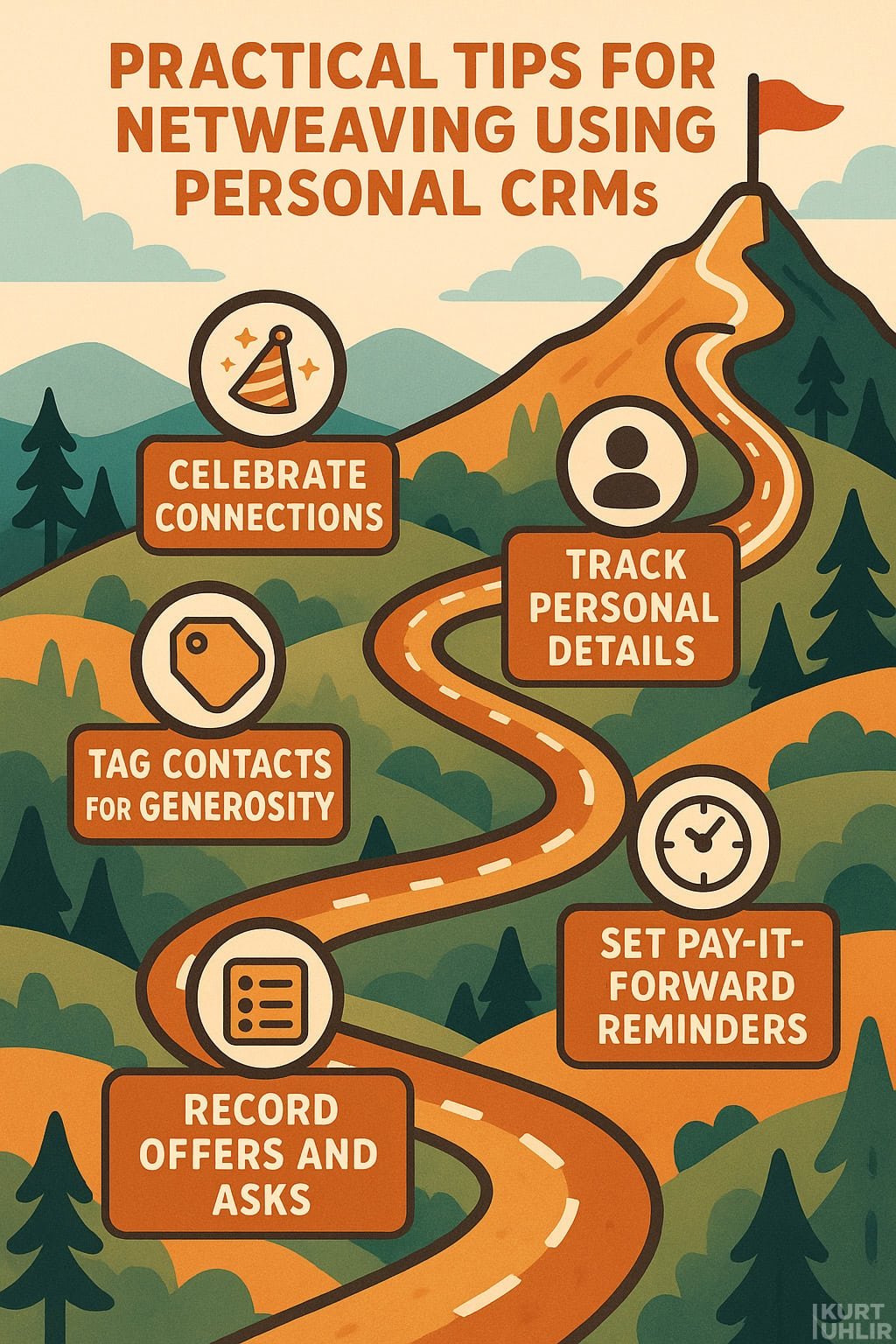
Example of Netweaving via Personal CRM
Let’s say within your CRM you have Alice, an ex- colleague who’s now looking to transition into fintech, and Bob, a friend who happens to work at a fintech startup that has just closed a 4th round of venture funding.
In Alice’s notes you have “interested in fintech roles” and in Bob’s notes you have “happy to refer good people to his company”. Your CRM reminder tells you it’s been 4 months since you talked to Alice. When you reach out, you also remember Bob.
Instead of just a one-to-one, you send a group email: “Hi Alice – we talked earlier about your move into fintech. I’d like to introduce you to Bob, who’s a friend at [FintechCo]. Bob, Alice is an amazing [previous role] with a big interest in your industry. I think you two would enjoy chatting – at minimum you have both run the NYC Marathon, so there’s that! I’ll let you take it from here.”
By facilitating this, you’ve added value to both. Alice gets a new connection (and possibly a job lead), Bob meets a high-quality person without having to source candidates cold.
And you? You get the glow of being a connector.
Maybe neither Alice nor Bob can repay you immediately, but you’ve strengthened your relationship with both. Over time, you become known as that person who knows everyone and is always willing to help. That’s an incredibly powerful reputation to have; opportunities will start flowing your way as a byproduct.
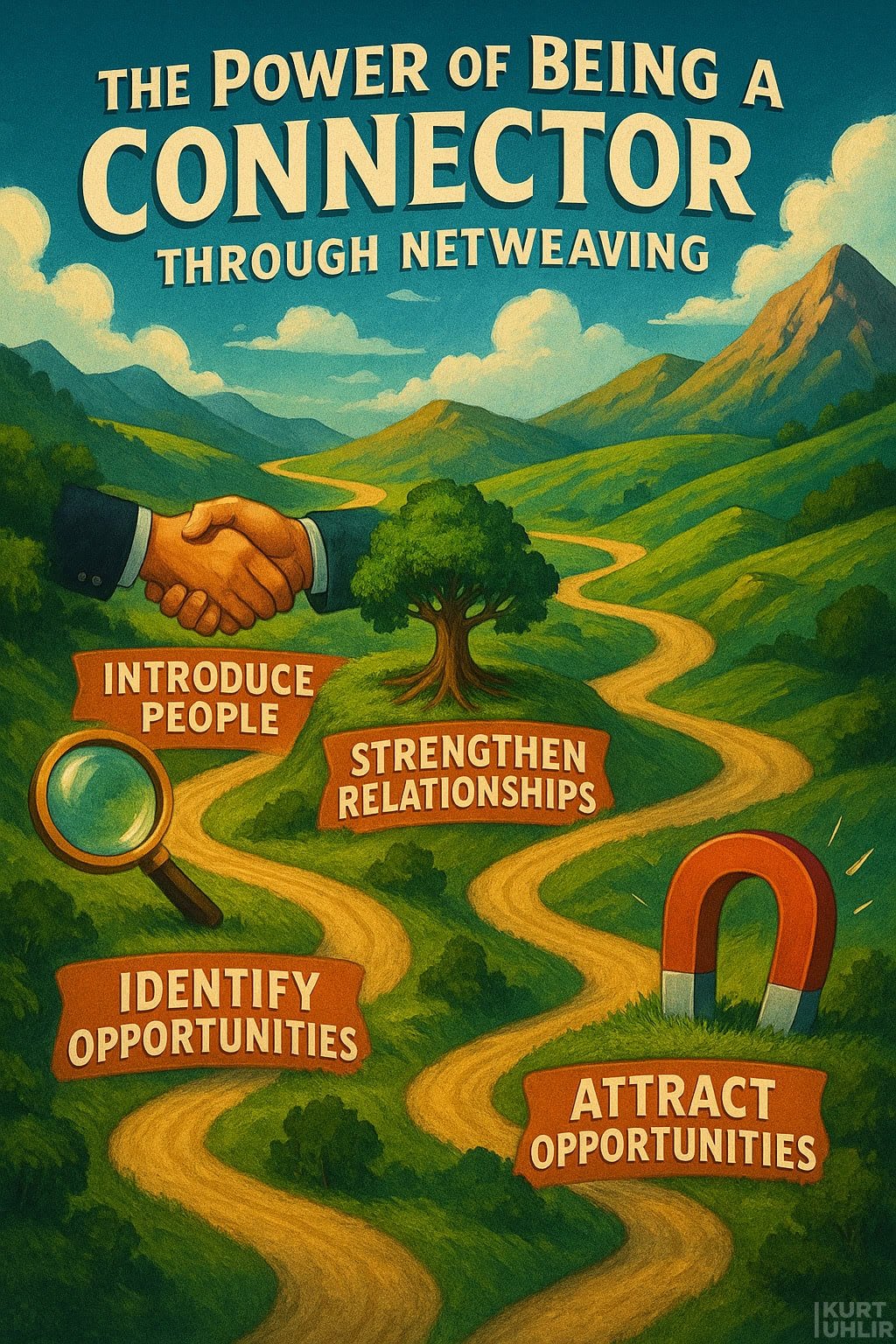
A personal CRM is like your netweaving (or networking if you prefer that term) toolkit – it helps you not only keep track of your own interactions, but also the interconnections among your contacts. It can also do much of what used to be manual effort and notetaking automatically too. It ensures no good deed opportunity is missed simply because you forgot who could benefit from whom.
One more point: netweaving and personal CRMs together can also remedy networking fatigue. Many people find networking draining because it feels inauthentic or one-sided. But if you shift your mindset to netweaving (and use your CRM to operationalize it), networking becomes more enjoyable. It’s rewarding to help others, and ironically, that giving mindset attracts positive returns for you in the long run.
As Bob Littell’s philosophy suggests, the more you weave nets of generosity, the stronger and more valuable your network becomes for everyone involved.
We’ve touched on servant leadership already in the examples, but let’s explicitly tie that in next. How can a personal CRM help you not just manage contacts, but lead and serve within your circle? We’ll explore that in the next part.
Additional reading on the topics of personal CRMs:
- Get the full guide on Personal CRMs – Never Lose Touch: How Personal CRMs Can Supercharge Your Network and Career in Just 15 Minutes Per Week
- Personal CRMs & Pay-it-Forward Leadership: Leading by Putting People First



